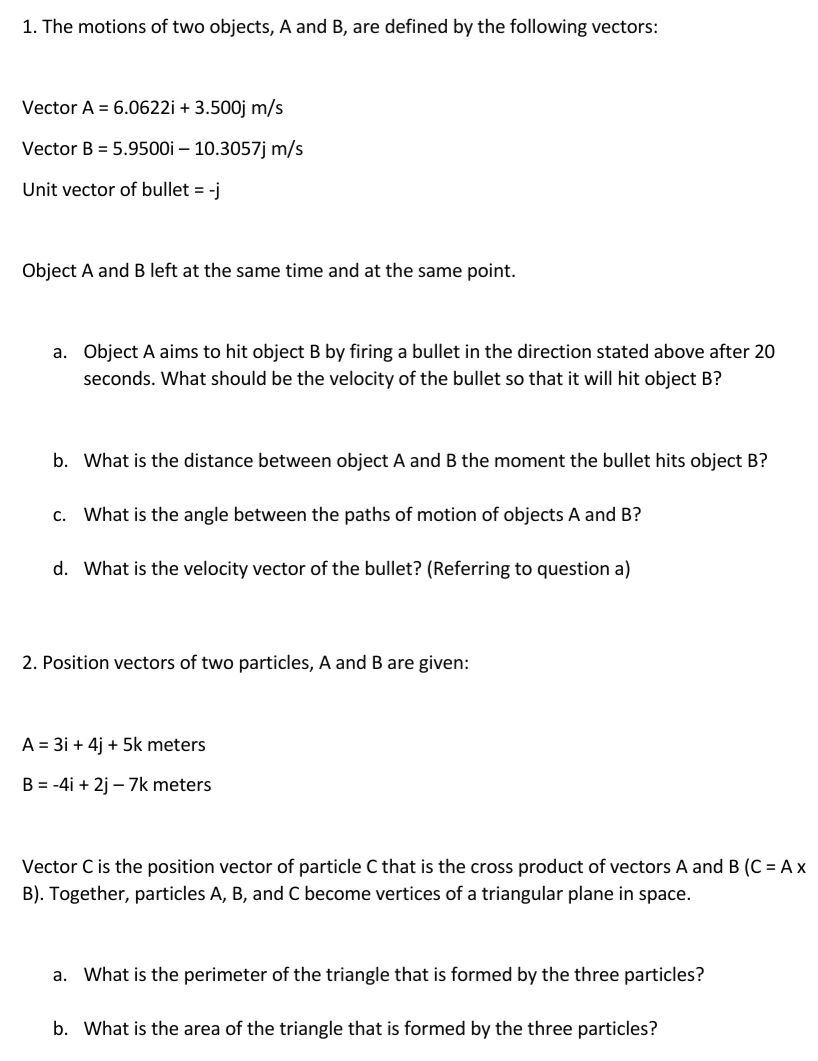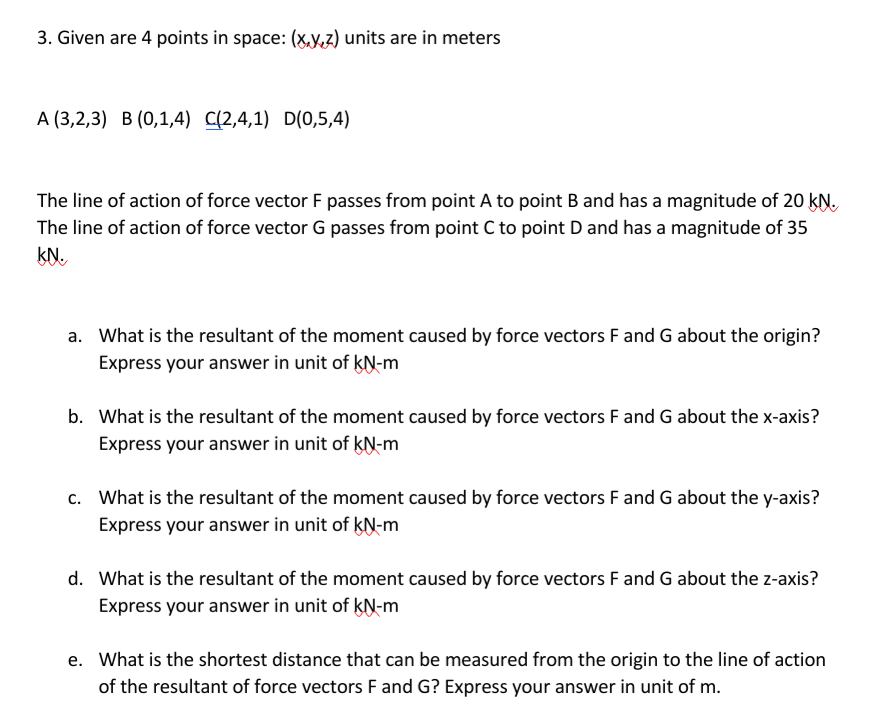1. The motions of two objects, A and B, are defined by the following vectors: Vector A = 6.0622i + 3.500j m/s Vector B = 5.9500i – 10.3057j m/s Unit vector of bullet = -j Object A and B left at the same time and at the same point. a. Object A aims to hit object B by firing a bullet in the direction stated above after 20 seconds. What should be the velocity of the bullet so that it will hit object B?
1. The motions of two objects, A and B, are defined by the following vectors:
Vector A = 6.0622i + 3.500j m/s
Vector B = 5.9500i – 10.3057j m/s
Unit vector of bullet = -j
Object A and B left at the same time and at the same point.
a. Object A aims to hit object B by firing a bullet in the direction stated above after 20 seconds. What should be the velocity of the bullet so that it will hit object B?
b. What is the distance between object A and B the moment the bullet hits object B?
c. What is the angle between the paths of motion of objects A and B?
d. What is the velocity vector of the bullet? (Referring to question a)
2. Position vectors of two particles, A and B are given:
A = 3i + 4j + 5k meters
B = -4i + 2j – 7k meters
Vector C is the position vector of particle C that is the cross product of vectors A and B (C = A x B). Together, particles A, B, and C become vertices of a triangular plane in space.
a. What is the perimeter of the triangle that is formed by the three particles?
b. What is the area of the triangle that is formed by the three particles?
3. Given are 4 points in space: (x,y,z) units are in meters
A (3,2,3) B (0,1,4) C(2,4,1) D(0,5,4)
The line of action of force vector F passes from point A to point B and has a magnitude of 20 kN. The line of action of force vector G passes from point C to point D and has a magnitude of 35 kN.
a. What is the resultant of the moment caused by force vectors F and G about the origin? Express your answer in unit of kN-m
b. What is the resultant of the moment caused by force vectors F and G about the x-axis? Express your answer in unit of kN-m
c. What is the resultant of the moment caused by force vectors F and G about the y-axis? Express your answer in unit of kN-m
d. What is the resultant of the moment caused by force vectors F and G about the z-axis? Express your answer in unit of kN-m
e. What is the shortest distance that can be measured from the origin to the line of action of the resultant of force vectors F and G? Express your answer in unit of m.


Step by step
Solved in 7 steps with 6 images








